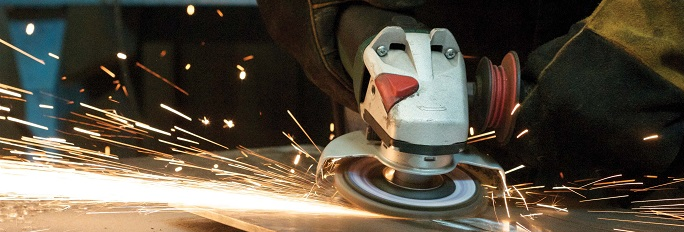Rust is an inevitable consequence of exposure to moisture and oxygen. Over time, it can weaken metal structures and cause unsightly stains on surfaces. Removing rust from metal surfaces is essential for preventing further damage and preserving their appearance. However, traditional methods such as sanding, wire brushing, or chemical treatment can be abrasive and damage the metal. A flap disc is a versatile and effective tool for removing rust without damaging the metal. In this article, we will discuss how to remove rust without damaging metal and why flap disc is a good option for rust removal.
Why Choose Flap Disc for Rust Removal?
A flap disc is a versatile abrasive tool that consists of a flat abrasive disc and overlapping flaps of abrasive cloth. The flaps are arranged around the circumference of the disc and are designed to wear down gradually as they work, exposing fresh abrasive grains. Flap discs are ideal for grinding, blending, and finishing metal surfaces due to their flexibility, long-lasting durability, and excellent performance on irregular surfaces.
When it comes to rust removal, flap discs are a superior option to traditional methods because they are less aggressive and less likely to damage the metal surface. Flap discs work by removing a thin layer of metal and rust, rather than aggressively sanding or grinding the surface. This approach is less likely to create heat, friction, or stress that could damage the metal or alter its properties. Additionally, the flaps of the disc conform to the contours of the surface, allowing for consistent and precise results.
How to Use a Flap Disc for Rust Removal?
Step 1: Prepare the Surface
Before using a flap disc, it is essential to prepare the surface properly. Start by cleaning the surface of any loose debris, dust, or grease using a wire brush or a clean cloth. Next, use a rust remover or a mixture of vinegar and baking soda to remove any remaining rust stains. Finally, rinse the surface with water and let it dry completely.
Step 2: Choose the Right Flap Disc
Flap discs come in various sizes, grits, and materials. When choosing a flap disc for rust removal, it is important to consider the material and hardness of the metal, the extent of the rust damage, and the desired finish. For example, if you are working on a soft metal such as aluminum, a flap disc with a lower grit size and a softer abrasive material such as zirconia flap disc may be more appropriate. On the other hand, if you are working on a harder metal such as steel, a flap disc with a higher grit size and a harder abrasive material such as ceramic flap disc may be more suitable. Additionally, consider the desired finish. If you want a smooth, polished surface, choose a finer grit size. If you want a rougher texture or want to remove paint or other coatings, choose a coarser grit size.
Step 3: Attach the Flap Disc
Attach the flap disc to your angle grinder or other compatible tool according to the manufacturer’s instructions. Make sure that the disc is securely fastened and that the flaps are facing in the right direction. Hold the tool firmly with both hands and wear appropriate protective gear such as gloves, safety glasses, and a dust mask.
Step 4: Start Grinding
Start grinding the surface with the flap disc at a low speed, gradually increasing the speed as needed. Keep the disc at a slight angle to the surface and move it back and forth in a sweeping motion. Avoid applying too much pressure, which could cause the disc to wear down quickly and create heat that could damage the metal. Instead, let the weight of the tool do the work and let the flaps of the disc conform to the contours of the surface. Check the surface frequently to monitor the progress and adjust the speed or grit size of the disc as needed.
Step 5: Clean the Surface
Once you have removed the rust and achieved the desired finish, turn off the tool and remove the flap disc. Clean the surface with a clean cloth or compressed air to remove any debris or dust. If necessary, you can use a rust inhibitor or a protective coating to prevent further rusting and prolong the life of the metal.
Step 6: Maintain the Flap Disc
To ensure the longevity and effectiveness of your flap disc, it is important to maintain it properly. After each use, clean the disc with a wire brush or compressed air to remove any debris or build-up. Store the disc in a dry, clean place and avoid exposing it to moisture or extreme temperatures. Replace the disc when the flaps have worn down to prevent damage to the metal or poor performance.
Conclusion
Removing rust from metal surfaces is essential for maintaining their integrity and appearance. Flap discs are a versatile and effective tool for rust removal that provides excellent results without damaging the metal. When using a flap disc, it is important to prepare the surface, choose the right disc, and maintain the proper technique and speed. By following these steps and taking appropriate safety precautions, you can remove rust from metal surfaces with ease and confidence.

